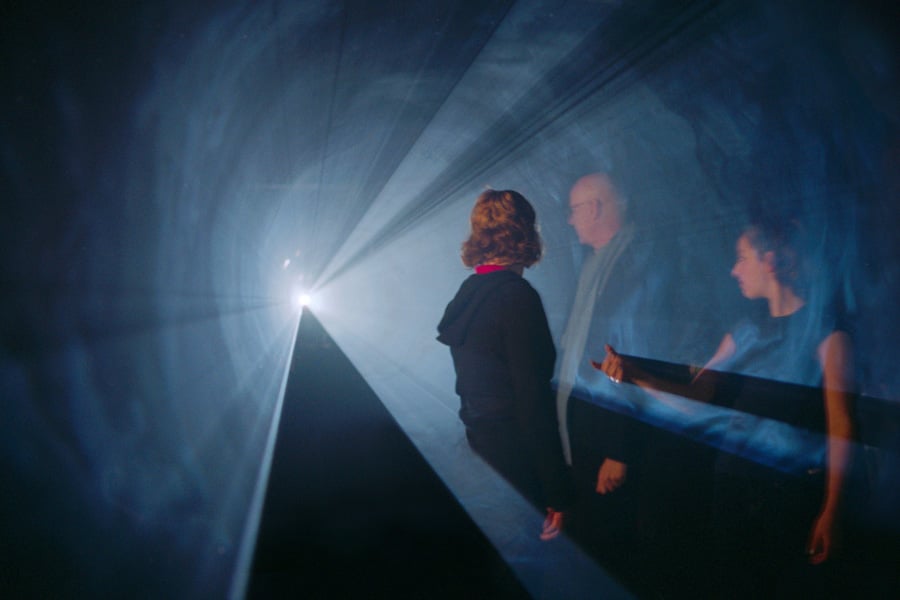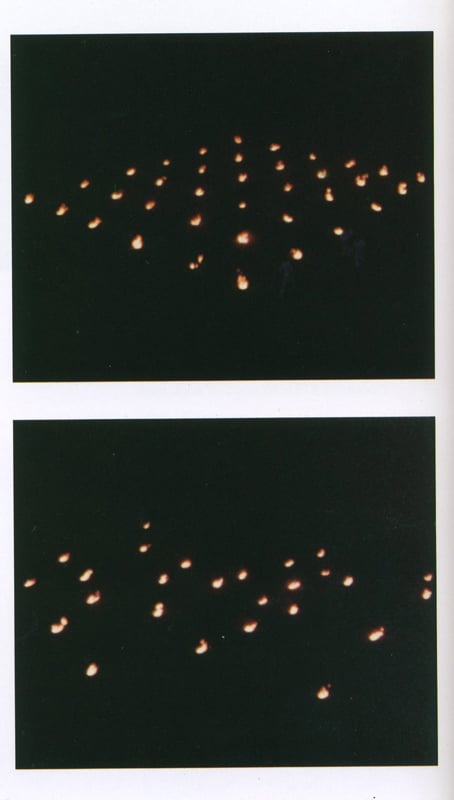Landscape for Fire
- Film & Video (Film & Video)
7 min 05
Anthony McCall
Landscape for fire is a major work by Anthony McCall. The film recounts a performance where characters in white, light up fires in a very orchestrated choreography of lights in a vast flat landscape. The performance is carefully planned – the fires are lit and geometrically aligned in a precise temporal progression. The appearance of the characters is preceded by a a horn, playing on our perception of a distant sound, strange and scary, suggesting a limit or a hazard. The crackling of matches, the ignition of gasoline, and the brisk breeze of the wind helps us to feel part of this strange celebration as we face the elements air, earth, and fire. A radical breath streams through the work. The editing of the film multiplies perspective: creation, presence, disappearance inhabit this powerful and original work.
Since the 70s, the British artist Anthony McCall has continued to push the boundaries of art. Exploring the boundaries between cinema and sculpture, he uses light and time as his signature materials. His work spans across drawing, installation, and performance, one of his preferred mediums. McCall is a key figure of British avant-garde film from the 70s. His first films retrace his outdoor performances. Experimental film in 16mm is one of his main mediums that he uses in confrontation with sculpture and performance. McCall is an indispensable reference to a younger generation of artists working in video and installation in England and abroad. Anthony McCall was born in Great Britain in 1946. He lives and works in New York.
Colors:
Other works by: » Anthony McCall

© » KADIST
Anthony McCall
1974This score is a graphic record of the detailed choreography of one of Anthony McCall’s Landscape for Fire performances...

© » KADIST
Anthony McCall
1973The film Line Describing a Cone was made in 1973 and it was projected for the first time at Fylkingen (Stockholm) on 30 August of the same year...
